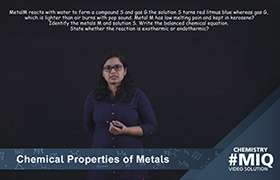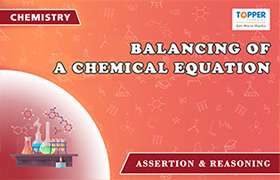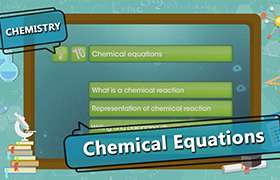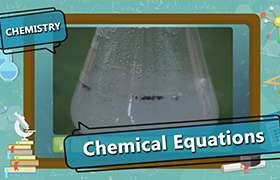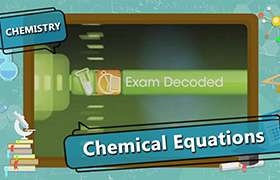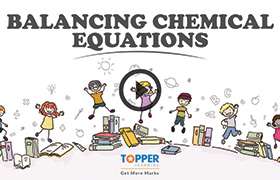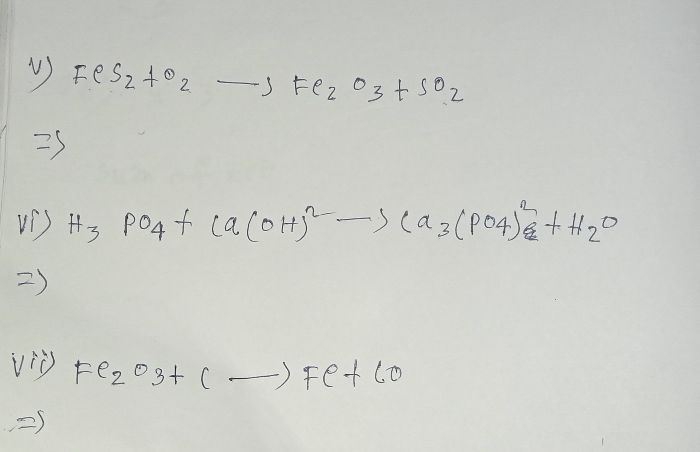CBSE Class 10 Answered
how to balance chemical equation
Asked by tabitahir1339 | 18 Jan, 2021, 11:27: PM
Balancing an equation
a balanced chemical equation, the total number of atoms of each element in the reactants, on the left-hand side of the equation is the same as the number of atoms in the products formed on the righthand side of the equation.
The total mass of the reactants is equal to the total mass of the products. The number of atoms of each element, before the reaction and after the reaction is equal.
Steps involved in Balancing a Chemical Equation
Consider the chemical reaction between magnesium and oxygen to understand the steps involved in balancing a chemical equation.
Step 1:
Let us first write the word equation for this reaction.
Magnesium + Oxygen → Magnesium oxide
Step 2
Write the chemical equation for the reaction between magnesium and oxygen.
Mg + O2 → MgO
Step 3
Count the number of times an element is occurring on both LHS and RHS in this equation.
Mg + O2 → MgO
Component Reactant Product
Magnesium 1 1
Oxygen 2 1
This is an unbalanced equation.
Step 4
To balance a chemical equation, first draw boxes around each formula. Do not change anything inside the boxes while balancing the equation.
Choose a reactant or a product that has the maximum number of atoms in it. In that compound, a select the element which has the maximum number of atoms.
In this equation we shall select MgO i.e.magnesium oxide and the element oxygen in it.
To balance the oxygen atoms, let us multiply magnesium oxide molecule by 2 on the right-hand side.The equation can now be expressed as
Component Reactant Product
Magnesium 1 X 2 = 2 2
Oxygen 1 X 2 = 2 2
Step 5
There are two oxygen atoms on either side of the equation, but one magnesium atom on the reactants side and two on the product's side. Therefore, multiply the magnesium atom by 2 on the left-hand side.
Component Reactant Product
Magnesium 1 X 2 = 2 2
Oxygen 2 2
The balanced equation is
2Mg + O2 → 2MgO
The number of atoms of each element of the reactants = The number of atoms of each element of the products
Step 6
Writing Specific conditions on the ArrowThe reaction is carried out in the presence of ‘heat’. On heating, magnesium combines with the oxygen present in the air to form magnesium oxide.

Step 7
Writing symbols of the Physical state to make a chemical equation more informative, the physical states of the reactants and products are mentioned along with their chemical formulae.The gaseous, liquid, aqueous and solid states of the reactants and products are represented by the notations (g), (l), (aq) and (s) respectively.

Using these steps, you can balance any chemical equation.
Magnesium + Oxygen → Magnesium oxide
Step 2
Mg + O2 → MgO
Step 3
Mg + O2 → MgO
This is an unbalanced equation.
Choose a reactant or a product that has the maximum number of atoms in it. In that compound, a select the element which has the maximum number of atoms.
Component Reactant Product
Component Reactant Product
The number of atoms of each element of the reactants = The number of atoms of each element of the products

Step 7

Using these steps, you can balance any chemical equation.
Answered by Ramandeep | 19 Jan, 2021, 01:09: PM
Application Videos
Concept Videos
CBSE 10 - Chemistry
Asked by yadavparmit83 | 01 Dec, 2023, 06:16: AM
CBSE 10 - Chemistry
Asked by ramjilal01071988 | 14 Oct, 2023, 08:42: PM
CBSE 10 - Chemistry
Asked by dikshantnaik1008 | 21 Jul, 2023, 11:47: AM
CBSE 10 - Chemistry
Asked by kashviS.shah | 14 Sep, 2022, 11:27: PM
CBSE 10 - Chemistry
Asked by saharupa28041 | 30 Jun, 2022, 11:29: PM
CBSE 10 - Chemistry
Asked by Sunita | 23 Feb, 2022, 06:25: PM
CBSE 10 - Chemistry
Asked by labheshvaidya | 11 Feb, 2022, 05:01: PM
CBSE 10 - Chemistry
Asked by sssaibadreeshwar | 27 Nov, 2021, 04:07: PM
CBSE 10 - Chemistry
Asked by tdeeksha3109 | 09 Nov, 2021, 02:11: PM
CBSE 10 - Chemistry
Asked by simratkaurr1 | 07 Jun, 2021, 12:55: PM

